The Organic Chemistry of Drug Design and Drug
























































































































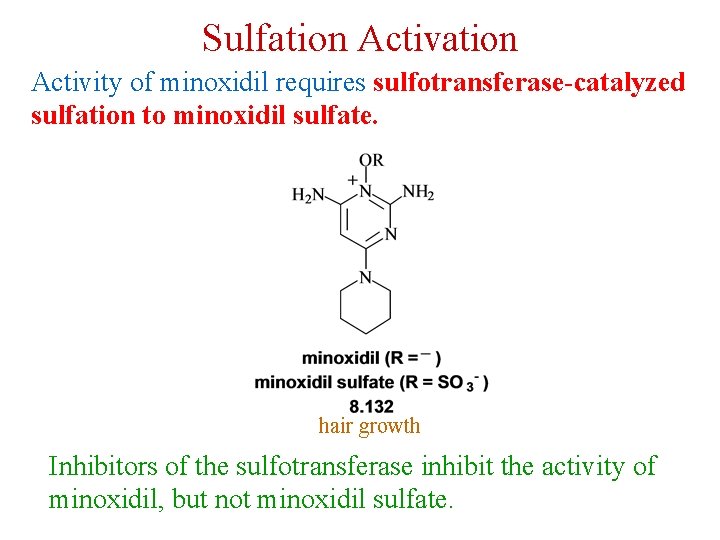
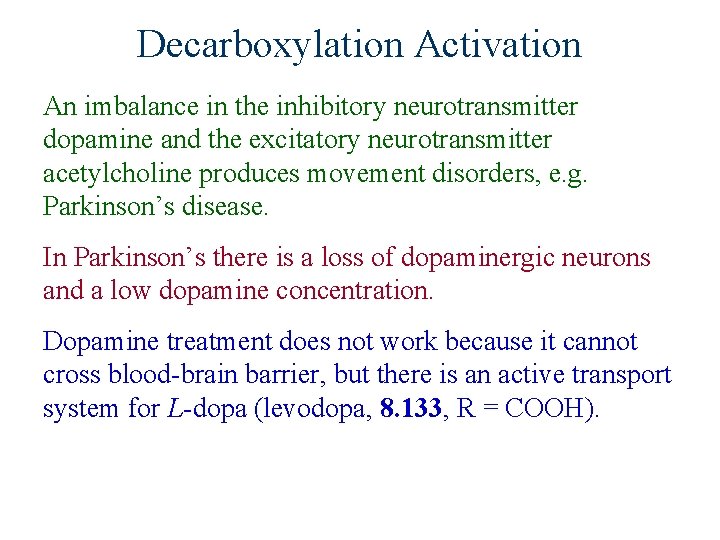
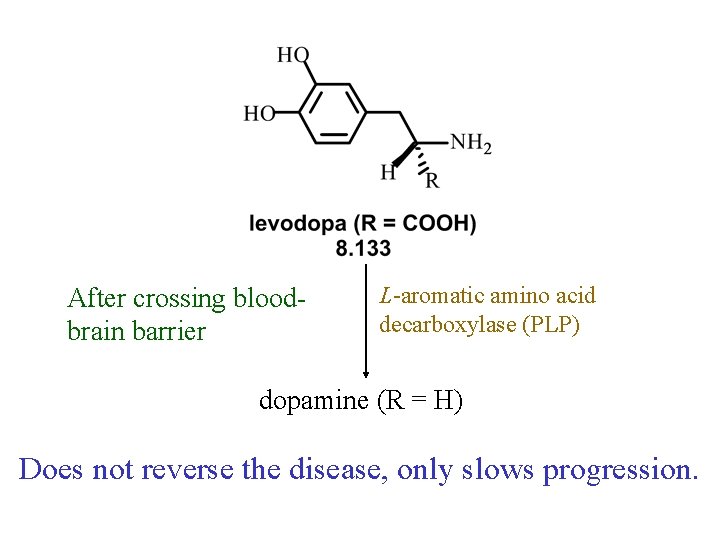
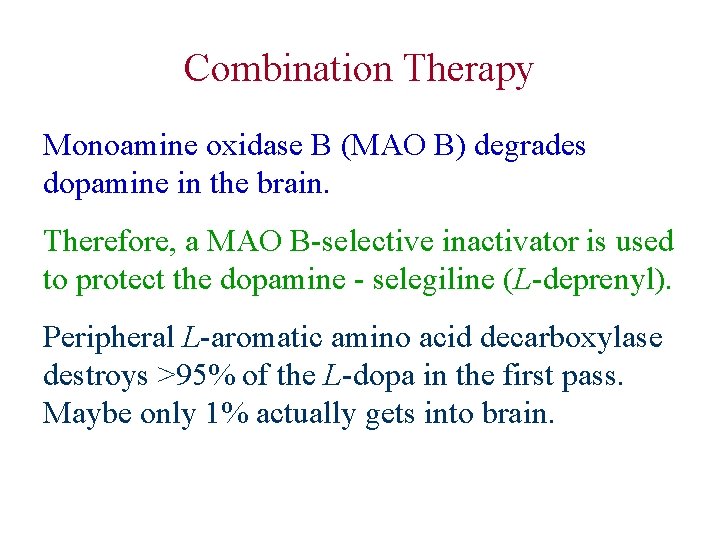
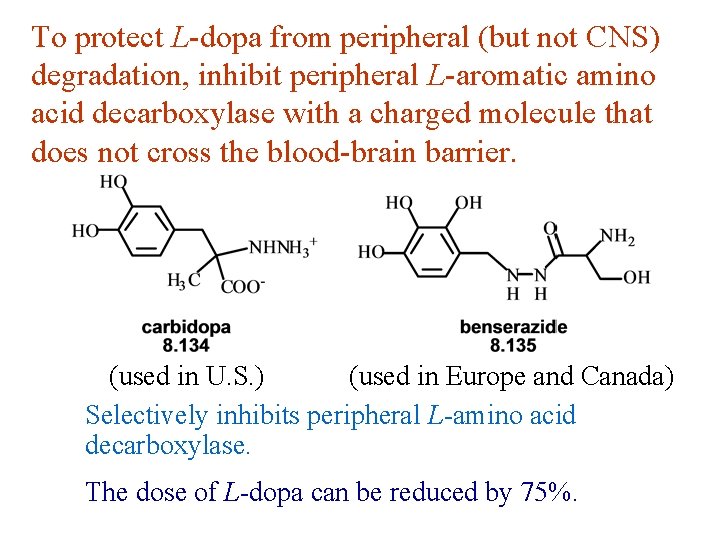
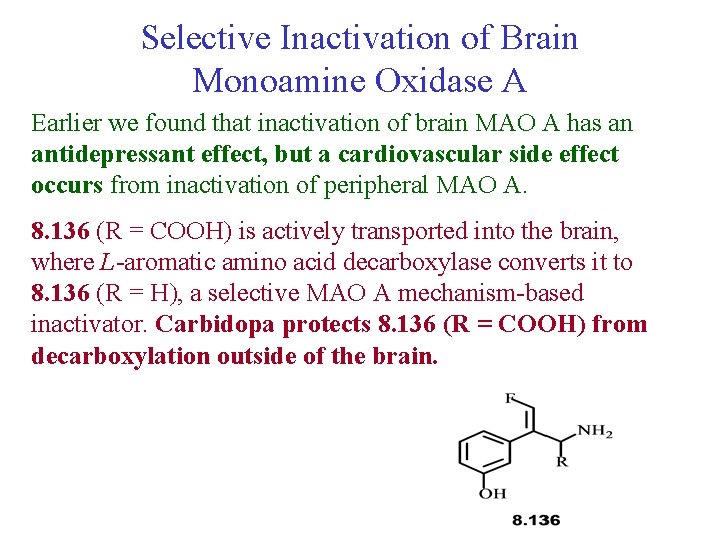

- Slides: 127

The Organic Chemistry of Drug Design and Drug Action Prodrugs and Drug Delivery Systems Nohad A Atrushi

• Prodrugs and Drug Delivery Systems • Drug Discovery: 1. Drug design and development 2. Drug Design: optimizing target interaction 3. Drug Design: Optimizing access to the target

Prodrugs and Drug Delivery Systems Prodrug - a pharmacologically inactive compound that is converted to an active drug by a metabolic biotransformation Ideally, conversion occurs as soon as the desired goal for designing the prodrug is achieved. Prodrugs and soft drugs are opposite: • a prodrug is inactive - requires metabolism to give active form • a soft drug is active - uses metabolism to promote excretion A pro-soft drug would require metabolism to convert it to a soft drug

Utility of Prodrugs 1. Aqueous Solubility - to increase water solubility so it can be injected in a small volume 2. Absorption and Distribution - to increase lipid solubility to penetrate membranes for better absorption 3. Site Specificity - to target a particular organ or tissue if a high concentration of certain enzymes is at a particular site or append something that directs the drug to a particular site---often tried to limit the toxicity of anticancer drugs.

Utility of Prodrugs (cont’d) 4. Instability - to prevent rapid metabolism; avoid firstpass effect 5. Prolonged Release - to attain a slow, steady release of the drug 6. Toxicity - to make less toxic until it reaches the site of action 7. Poor Patient Acceptability - to remove an unpleasant taste or odor; gastric irritation 8. Formulation Problems - to convert a drug that is a gas or volatile liquid into a solid

Types of Prodrugs Drug Latentiation - rational prodrug design I. Carrier-linked prodrug A compound that contains an active drug linked to a carrier group that is removed enzymatically A. bipartate - comprised of one carrier attached to drug B. tripartate - carrier connected to a linker that is connected to drug C. mutual - two, usually synergistic, drugs attached to each other II. Bioprecursor prodrug A compound metabolized by molecular modification into a new compound, which is a drug or is metabolized further to a drug - not just simple cleavage of a group from the prodrug—e. g. , amine getting oxidized to CO 2 H, to afford the active.

Protecting Group Analogy for the Concept of Prodrugs Scheme 8. 1 analogous to carrier-linked The ester group can be used To modify properties of The drug analogous to bioprecursor Keep in mind that a prodrug whose design is based on rat metabolism may not be effective in humans.

Mechanisms of Prodrug Activation Carrier-Linked Prodrugs Most common activation reaction is hydrolysis. Rate of hydrolysis can be modified by locating alkyl groups in area of the carbonyl group to Increase steric hindrance, and retard hydrolysis rate.

Ideal Drug Carriers 1. Protect the drug until it reaches the site of action 2. Localize the drug at the site of action 3. Allow for release of drug 4. Minimize host toxicity 5. Are biodegradable, inert, and nonimmunogenic 6. Are easily prepared and inexpensive 7. Are stable in the dosage form

Carrier Linkages for Various Functional Groups Alcohols, Carboxylic Acids, and Related Groups Most common prodrug form is an ester • esterases are ubiquitous • can prepare esters with any degree of hydrophilicity or lipophilicity • ester stability can be controlled by appropriate electronic and steric manipulations

Prodrugs for Alcohol. Containing Drugs Table 8. 1 Ester analogs as prodrugs can affect lipophilicity or hydrophilicity

To accelerate hydrolysis rate: • attach an electron-withdrawing group if a base hydrolysis mechanism is important • attach an electron-donating group if an acid hydolysis mechanism is important To slow down hydrolysis rate: • make sterically-hindered esters • make long-chain fatty acid esters

Another Approach to Accelerate Hydrolysis Intramolecular hydrolysis of succinate esters Scheme 8. 2 Also, acetals or ketals can be made for rapid hydrolysis in the acidic medium of the GI tract.

Enolic hydroxyl groups can be esterified as well. antirheumatic agent

Carboxylic Acid-Containing Groups Esterify as with alcohols

Maintaining Water Solubility of Carboxylate Prodrugs Can vary p. Ka by appropriate choice of R and R

Prodrugs for Phosphate- or Phosphonate-Containing Drugs

Amine Prodrugs Table 8. 2 Amides are commonly not used because of stability Activated amides (low basicity amines or amino acids) are effective p. Ka of amines can be lowered by 3 units by conversion to NMannich bases (X = CH 2 NHCOAr)

N-Mannich base (R = CH 2 NHCOPh) has a log D 7. 4 two units greater than the parent compound.

Another approach to lower p. Ka of amines and make more lipophilic. Imine (Schiff base) prodrug hydrolyze imine and amide to GABA inside brain anticonvulsant

A Reductive Carrier-Linked Prodrug Approach Scheme 8. 3

Prodrugs of Sulfonamides A water soluble prodrug of the anti-inflammatory drug valdecoxib (8. 9) has been made (8. 10).

Prodrug Analogs of Carbonyl Compounds Table 8. 3 imines oximes ketals

Examples of Carrier-Linked Bipartate Prodrugs

1. Prodrug for Increased Water Solubility Prodrug forms for aqueous injection or opthalmic use poor water solubility corticosteroid Choice of water solubilizing group: The ester must be stable enough in water for a shelf life of > 2 years (13 year half-life), but must be hydrolyzed in vivo with a half-life < 10 minutes. Therefore, in vivo/in vitro lability ratio about 106.

To avoid formulation of etoposide with detergent, PEG, and Et. OH (used to increase water solubility), it has been converted to the phosphate prodrug.

2. Prodrug for Improved Absorption Through Skin corticosteroids - inflammation, allergic, pruritic skin conditions

Better absorption into cornea for the treatment of glaucoma The cornea has significant esterase activity

3. Prodrug for Site Specificity Bowel sterilant (administer rectally) prodrug R = Ac (administer orally) hydrolyzed in intestines

3. Prodrug for Site Specificity The blood-brain barrier prevents hydrophilic molecules from entering the brain, unless actively transported. The anticonvulsant drug vigabatrin (see Chapter 5) crosses poorly. A glyceryl lipid (8. 17, R = linolenoyl) containing one GABA ester and one vigabatrin ester was 300 times more potent in vivo than vigabatrin.

Site Specificity Using Enzymes at the Site of Action Phosphatase should release the drug selectively in tumor cells. This approach has not been successful because the prodrugs are too polar, enzyme selectivity is not sufficient, or tumor cell perfusion rate is poor.

Enzyme-Prodrug Therapies For selective activation of prodrugs in tumor cells Two steps: 1. incorporate a prodrug-activating enzyme into a target tumor cell 2. administer a nontoxic prodrug which is a substrate for the exogenous enzyme incorporated

Criteria for Success with Enzyme-Prodrug Therapies 1. The prodrug-activating enzyme is either nonhuman or a human protein expressed poorly 2. The prodrug-activating enzyme must have high catalytic activity 3. The prodrug must be a good substrate for the incorporated enzyme and not for other endogenous enzymes 4. The prodrug must be able to cross tumor cell membranes 5. The prodrug should have low cytotoxicity and the drug high cytotoxicity 6. The activated drug should be highly diffusable to kill neighboring nonexpressing cells (bystander killing effect) 7. The half-life of the active drug is long enough for bystander killing effect but short enough to avoid leaking out of tumor cells

Antibody-Directed Enzyme Prodrug Therapy (ADEPT) An approach for site-specific delivery of cancer drugs. Phase One: An antibody-enzyme conjugate is administered which binds to the surface of the tumor cells. The antibody used has been targeted for the particular tumor cell. The enzyme chosen for the conjugate is one that will be used to cleave the carrier group off of the prodrug administered in the next phase. Phase Two: After the antibody-enzyme has accumulated on the tumor cell and the excess conjugate is cleared from the blood and normal tissues, the prodrug is administered. The enzyme conjugated with the antibody at the tumor cell surface catalyzes the conversion of the prodrug to the drug when it reaches the tumor cell.


ADEPT Advantages: 1. Increased selectivity for targeted cell 2. Each enzyme molecule converts many prodrug molecules 3. The released drug is at the site of action 4. Demonstrated to be effective at the clinical level 5. Concentrates the drug at the site of action Disadvantages: 1. Immunogenicity and rejection of antibody-enzyme conjugate 2. Complexity of the two-phase system and i. v. administration 3. Potential for leakback of the active drug

An example is carboxypeptidase G 2 or alkaline phosphatase linked to an antibody to activate a nitrogen mustard prodrug. Humanization of antibodies minimizes immunogenicity. Note the prodrug-activating enzyme is a bacterial enzyme.

Antibody-Directed Abzyme Prodrug Therapy (ADAPT) Instead of using a prodrug-activating enzyme, a humanized prodrug-activating catalytic antibody (abzyme) can be used. Ideally, the abzyme catalyzes a reaction not known to occur in humans, so the only site where the prodrug could be activated is at the tumor cell where the abzyme is bound. Antibody 38 C 2 catalyzes sequential retro-aldol and retro-Michael reactions not catalyzed by any known human enzyme. Found to be long-lived in vivo, to activate prodrugs selectively, and to kill colon and prostate cancer cells.


Abzyme 38 C 2 Activation of a Doxorubicin Prodrug

Lectin-directed enzyme-activated prodrug therapy The LEAPT strategy. (A) Concept. LEAPT is a bipartite delivery system. (Step 1) Site-selective delivery of a glycosylated rhamnosidase (Rhacleaving) enzyme by sugar-mediated RME. (Step 2) Delivery of a Rhacapped prodrug that can be cleaved only by the delivered glycosylated rhamnosidase. When these two steps are combined, activation of the prodrug results in site-selective release of the parent drug (Step 3). (B) Glycosylated enzyme construction. Pure wild-type α-L-rhamnosidase N-WT with native “Y-linked” glycosylation was (i) chemically glycosylated with sugar-IME reagents to yield a N-WT-Xxx (Xxx = Gal, Man, or d. Gal) series with mixed synthetic (“X-linked”) and native (Ylinked) glycosylation or (ii) enzymatically DG with endo-H, yielding NDG. N-DG was then chemically reglycosylated with sugar-IME reagents to yield only synthetic (X-linked) N-DG-Xxx (15). An IME reagent bearing two terminal Gal units (d. Gal) was also synthesized from Dgalactose.

Lectin-directed enzyme-activated prodrug therapy

Gene-Directed Enzyme Prodrug Therapy (GDEPT) Also known as suicide gene therapy A gene encoding the prodrug-activating enzyme is expressed in target cancer cells under the control of tumor-selective promoters or by viral transfection. These cells activate the prodrug as in ADEPT. Scheme 8. 6

Nitroreductase gene-directed enzyme prodrug therapy

suicide gene therapy

suicide gene therapy

4. Prodrug for Stability protection from first-pass effect Oral administration has lower bioavailability than i. v. injection. antihypertension plasma levels 8 times that with propanolol

5. Prodrugs for Slow and Prolonged Release 1. To reduce the number and frequency of doses 2. To eliminate night time administration 3. To minimize patient noncompliance 4. To eliminate peaks and valleys of fast release (relieve strain on cells) 5. To reduce toxic levels 6. To reduce GI side effects Long-chain fatty acid esters hydrolyze slowly Intramuscular injection is used also

Sedative/tranquilizer/antipsychotic slow release inject i. m. Antipsychotic activity for about 1 month

6. Prodrugs to Minimize Toxicity Many of the prodrugs just discussed also have lowered toxicity. For example, epinephrine (for glaucoma) has ocular and systemic side effects not found in dipivaloylepinephrine.

7. Prodrug to Increase Patient Acceptance The antibacterial drug clindamycin (8. 28) is bitter and not well tolerated by children. Clindamycin palmitate is not bitter. Either not soluble in saliva or does not bind to the bitter taste receptor or both.

8. Prodrug to Eliminate Formulation Problems Formaldehyde is a gas with a pungent odor that is used as a disinfectant. Too toxic for direct use. It is a stable solid that decomposes in aqueous acid. The p. H of urine in the bladder is about 4. 8, so methenamine is used as a urinary tract antiseptic. Has to be enteric coated to prevent hydrolysis in the stomach.

Areas of Improvement for Prodrugs

Areas of Improvement for Prodrugs • site specificity • protection of drug from biodegradation • minimization of side effects

Macromolecular Drug Delivery To address these shortcomings, macromolecular drug delivery systems have been developed. A bipartate carrier-linked prodrug in which the drug is attached to a macromolecule, such as a synthetic polymer, protein, lectin, antibody, cell, etc. Absorption/distribution depends on the physicochemical properties of macromolecular carrier, not of the drug. Therefore, attain better targeting. Minimize interactions with other tissues or enzymes. Fewer metabolic problems; increased therapeutic index.

Disadvantages of Macromolecular Delivery Systems • Macromolecules may not be well absorbed • Alternative means of administration may be needed (injection) • Immunogenicity problems

Macromolecular Drug Carriers Synthetic polymers Aspirin linked to poly(vinyl alcohol) has about the same potency as aspirin, but less toxic.

Steric Hindrance by Polymer Carrier poly(methacrylate) to enhance water solubility testosterone No androgenic effect Polymer backbone may be sterically hindering the release of the testosterone.

A spacer arm was added, and it was as effective as testosterone. to enhance water solubility

Poly( -Amino Acid) Carriers poly(L-glutamine) spacer norethindrone - contraceptive Slow release over nine months in rats

General Site-Specific Macromolecular Drug Delivery System either hydrophilic or hydrophobic for site specificity

Site-Specific Delivery of a Nitrogen Mustard poly(L-Glu) spacer arm water-solubilizing antibody from rabbit antiserum against mouse lymphoma cells All 5 mice tested were alive and tumor free after 60 days (all controls died). Also, therapeutic index greatly enhanced (40 fold).

Tumor Cell Selectivity Drug attached to albumin (R = albumin) Tumor cells take up proteins rapidly. Proteins broken down inside cells, releasing the drug. Shown to inhibit growth of Ectomelia virus in mouse liver, whereas free inhibitor did not. antitumor

Antibody-Targeted Chemotherapy Scheme 8. 7 humanized calicheamicin, except as disulfide instead of trisulfide spacer Does not release calicheamicin nonenzymatically. Exhibits no immune response.

Tripartate Drugs (Self-immolative Prodrugs) A bipartate prodrug may be ineffective because the linkage is too labile or too stable. In a tripartate prodrug, the carrier is not attached to the drug; rather, to the linker. Therefore, more flexibility in the types of functional groups and linkages that can be used, and it moves the cleavage site away from the carrier. The linker-drug bond must cleave spontaneously (i. e. , be self-immolative) after the carrier-linker bond is broken.

Tripartate Prodrugs Scheme 8. 8

Typical Approach Scheme 8. 9

Tripartate Prodrugs of Ampicillin Poor oral absorption (40%) Excess antibiotic may destroy important intestinal bacteria used in digestion and for biosynthesis of cofactors. Also, more rapid onset of resistance. antibacterial Various esters made were too stable in humans (although they were hydrolyzed in rodents) - thought the thiazolidine ring sterically hindered the esterase.

Tripartate Prodrugs of Ampicillin Scheme 8. 10 98 -99% absorbed Ampicillin is released in < 15 minutes

Reversible Redox Drug Delivery System to the CNS (Nitrogen Mustard? ? ? HW) Scheme 8. 11 hydrolysis deactivated hydrophilic drug electron-donating, lipophilic carrier hydrolysis activated electronwithdrawing; hydrophilic Passive diffusion of 8. 47 into the brain; active transport of 8. 49 out of the brain XH of the drug is NH 2, OH, or COOH If oxidation occurs before it gets into the brain, it cannot cross the blood-brain barrier.

When the drug is a carboxylic acid, a selfimmolative reaction also can be used. Scheme 8. 12

Example of Redox Drug Delivery Antibody generation in the brain is not significant. -Lactams are too hydrophilic to cross the blood-brain barrier effectively. Scheme 8. 13 High concentrations of -lactams delivered into brain.

Tripartate Prodrug for Delivery of Antibacterials Permeases are bacterial transport proteins for uptake of peptides. Scheme 8. 14 Only L, L-dipeptides are active

Mutual Prodrugs A bipartate or tripartate prodrug in which the carrier is a synergistic drug with the drug to which it is linked. Antibacterial ampicillin -lactamase inactivator penicillanic acid sulfone Hydrolysis gives 1: 1: 1 ampicillin : penicillanic acid sulfone : formaldehyde

Ideal Mutual Prodrugs • Well absorbed • Both components are released together and quantitatively after absorption • Maximal effect of the combination of the two drugs occurs at 1: 1 ratio • Distribution/elimination of components are similar

II. Bioprecursor Prodrugs Carrier-linked prodrugs largely use hydrolytic activation Bioprecursor drugs mostly use oxidative or reductive activation The metabolically-activated alkylating agents are actually examples of bioprecursor prodrugs.

Protonation Activation Discovery of Omeprazole Cimetidine and ranitidine reduce gastric acid secretion by antagonizing the H 2 histamine receptor. Another way to lower gastric acid secretion is by inhibition of the enzyme H+, K+-ATPase (also called the proton pump), which exchanges protons for potassium ions in parietal stomach cells, thereby increasing stomach acidity.

Lead Discovery Lead compound found in a random screen. Liver toxicity observed thought to be because of the thioamide group.

Lead Modification Related analogs made, and 8. 61 had good antisecretory activity. Modification gave 8. 62 with high activity. The sulfoxide (8. 63) was more potent, but it blocked iodine uptake into the thyroid.

Lead Modification (cont’d) Modification of 8. 63 gave 8. 64 having no iodine blockage activity. Picoprazole shown to be an inhibitor of H+, K+-ATPase. SAR of analogs indicated electron-donating groups on the pyridine ring were favorable. Increased inhibition of H+, K+-ATPase. Best analog was omeprazole (8. 65).

The p. Ka of the pyridine ring of omeprazole is about 4, so it is not protonated and able to cross the secretory canaliculus of the parietal cell. The p. H inside the cell is below 1, so this initiates the protonation reaction below. Scheme 8. 16 Formation of 8. 66 leads to covalent attachment. Omeprazole also inhibits isozymes of carbonic anhydrase, another mechanism for lowering gastric acid secretion.

Hydrolytic Activation Hydrolysis can be a mechanism for bioprecursor prodrug activation, if the product requires additional activation. Scheme 8. 17 antitumor agent prodrugs of leinamycin

Hydrolysis of these analogs gives an intermediate that reacts further to the activated form. increased stability over leinamycin Scheme 8. 18 this was synthesized and gave 8. 74 as well as DNA cleavage

Elimination Activation Scheme 8. 19 rheumatoid arthritis drug potent inhibitor of dihydroorotate dehydrogenase Inhibition of dihydroorotate dehydrogenase blocks pyrimidine biosynthesis in human T lymphocytes.

Oxidative Activation N-Dealkylation Sedative 8. 20

O-Dealkylation Analgesic activity of phenacetin is a result of O-dealkylation to acetaminophen.

Oxidative Deamination Neoplastic (cancer) cells have a high concentration of phosphoramidases, so hundreds of phosphamide analogs of nitrogen mustards were made for selective activation in these cells. Scheme 8. 21 Cyclophosphamide was very effective, but it required liver homogenates (contains P 450) for activation. Therefore oxidation is required, not hydrolysis. isolated

N-Oxidation identified advanced Hodgkin’s disease Scheme 8. 22 identified

N-Oxidation Pralidoxime chloride is an antidote for nerve poisons. It reacts with acetylcholinesterase that has been inactivated by organophosphorus toxins.

To increase the permeability of pralidoxime into the CNS, the pyridinium ring was reduced (8. 92). oxidation into brain Similar to the reversible redox drug delivery strategy for getting drugs into the brain by attaching them to a dihydronicotinic acid, hydrophobic 8. 92 crosses the blood-brain barrier; oxidation to 8. 91 prevents efflux from brain.

Prodrugs for (increased) Site Specificity ✵Bodor and co-workers have devised a reversible redox drug delivery system (RRDDS) for getting drugs into the CNS and then, once in, preventing their efflux. The approach is based on the attachment of a hydrophilic drug to a lipophilic carrier (a dihydropyridine) thereby making prodrug that actively transported into the brain.

Prodrugs for (increased) Site Specificity Once inside the brain, the lipophilic carrier is converted enzymatically to a highly hydrophilic species (positively charged), which is then enzymatically hydrolyzed back to the drug and N-methylnicotinic acid, which is eliminated from the brain. ♫ The oxidation of the dihydropyridine to the pyridinium ion (half-life generally 20 -50 min) prevents the drug from escaping out of the brain because it becomes charged. ♫ This drives the equilibrium of the lipophilic precursor throughout all of the tissues of the body to favor the brain.

Prodrugs for (increased) Site Specificity

Mechanism of Acetylcholinesterase Scheme 8. 23

Inactivation of Acetylcholinesterase by Diisopropyl Phosphorofluoridate Scheme 8. 24 affinity labeling agent irreversible inhibition Inactivation prevents degradation of the excitatory neurotransmitter acetylcholine. Accumulation of acetylcholine causes muscle cells in airways to contract and secrete mucous, then muscles become paralyzed.

Reactivation of Inactivated Acetylcholinesterase by Pralidoxime Scheme 8. 25

Temporary inhibition of acetylcholinesterase enhances cholinergic action on skeletal muscle. Scheme 8. 26 Used for the neuromuscular disease myasthenia gravis covalent, but reversible inhibition

Reversible (noncovalent) inhibitors of acetylcholinesterase, such as donepezil and tacrine are used for Alzheimer’s disease. Enhances neurotransmission involved in memory.

S-Oxidation Poor oral bioavailability of brefeldin A. Converted to Michael addition sulfide prodrug (8. 98). S-Oxidation and elimination gives brefeldin A. Scheme 8. 27 antitumor, antiviral agent

Aromatic Hydroxylation Cyclohexenones as prodrugs for catechols Scheme 8. 28 oxidation next to sp 2 carbonyl aromatic hydroxylation

Alkene Epoxidation active anticonvulsant agent

Transamination Stimulation of pyruvate dehydrogenase results in a change of myocardial metabolism from fatty acid to glucose utilization. Glucose metabolism requires less O 2 consumption. Therefore, utilization of glucose metabolism would be beneficial to patients with ischemic heart disease (arterial blood flow blocked; less O 2 available).

Arylglyoxylic acids (8. 104) stimulate pyruvate dehydrogenase, but have a short duration of action. Oxfenicine (8. 105, R = OH) is actively transported and is transaminated (a PLP aminotransferase) in the heart to 8. 104 (R = OH).

Reductive Activation Azo Reduction Scheme 8. 29 ulcerative colitis For inflammatory bowel disease Anaerobic cleavage by bacteria in lower bowel Causes side effects

To prevent side effect by sulfapyridine a macromolecular delivery system was developed. poly(vinylamine) Not absorbed or metabolized in small intestine. spacer Released by reduction at the disease site. Sulfapyridine is not released (still attached to polymer). More potent than sulfasalazine.

Azido Reduction antiviral drug Vidarabine is rapidly deaminated by adenosine deaminase. 8. 110, R = N 3 is not a substrate for adenosine deaminase and also can cross the blood-brain barrier for brain infections.

Sulfoxide Reduction anti-arthritis Sulindac is inactive in vitro; the sulfide is active in vitro and in vivo.

Sulindac is an indane isostere of indomethacin, which was designed as a serotonin analog. The 5 -F replaced the 5 -OMe group to increase analgesic properties. The p-SOCH 3 group replaced p-Cl to increase water solubility.

Disulfide Reduction To increase the lipophilicity of thiamin for absorption into the CNS. Scheme 8. 30 nonenzymatic poorly absorbed into CNS

To diminish toxicity of primaquine and target it for cells with the malaria parasite, a macromolecular drug delivery system was designed. antimalarial, toxic Intracellular thiol much higher than in blood; selective reduction inside the cell primaquine for improved uptake in liver Therapeutic index of 8. 116 is 12 times higher than 8. 115 in mice.

Nitro Reduction Scheme 8. 32 Mechanism-based inactivator of thymidylate synthase

Nucleotide Activation Scheme 8. 33 Anti-leukemia drug Inhibits several enzymes in the purine nucleotide biosynthesis pathway.

Phosphorylation Activation antiviral 2 -deoxyguanosine Resembles structure of 2 -deoxyguanosine Uninfected cells do not phosphorylate acyclovir (selective toxicity) viral thymidine kinase R = PO 3= viral guanylate kinase R = P 2 O 6 -3 viral phosphoglycerate kinase R = P 3 O 9 -4

Acyclovir triphosphate is a substrate for viral -DNA polymerase but not for normal -DNA polymerase Incorporation into viral DNA leads to a dead-end complex (not active). Disrupts viral replication cycle and destroys the virus. Even if the triphosphate of acyclovir were released, it is too polar to be taken up by normal cells. High selective toxicity

Resistance to Acyclovir Modification of thymidine kinase Change in substrate specificity for thymidine kinase Altered viral -DNA polymerase

Only 15 -20% of acyclovir is absorbed Therefore, prodrugs have been designed to increase oral absorption. Hydrolyzes here Prodrug for a prodrug adenosine deaminase acyclovir

Hydroxylates here xanthine oxidase acyclovir This prodrug is 18 times more water soluble than acyclovir.

A bipartate carrier-linked prodrug of acyclovir, the L-valyl ester of acyclovir, has 3 -5 fold higher oral bioavailability with the same safety profile.

An analog of acyclovir whose structure is even closer to that of 2 -deoxyguanosine is ganciclovir. More potent than acyclovir against human cytomegalovirus.

Two carbon isosteres of ganciclovir are available. C in place of O Better oral absorption than penciclovir Converted to penciclovir rapidly

Sulfation Activity of minoxidil requires sulfotransferase-catalyzed sulfation to minoxidil sulfate. hair growth Inhibitors of the sulfotransferase inhibit the activity of minoxidil, but not minoxidil sulfate.

Decarboxylation Activation An imbalance in the inhibitory neurotransmitter dopamine and the excitatory neurotransmitter acetylcholine produces movement disorders, e. g. Parkinson’s disease. In Parkinson’s there is a loss of dopaminergic neurons and a low dopamine concentration. Dopamine treatment does not work because it cannot cross blood-brain barrier, but there is an active transport system for L-dopa (levodopa, 8. 133, R = COOH).

After crossing bloodbrain barrier L-aromatic amino acid decarboxylase (PLP) dopamine (R = H) Does not reverse the disease, only slows progression.

Combination Therapy Monoamine oxidase B (MAO B) degrades dopamine in the brain. Therefore, a MAO B-selective inactivator is used to protect the dopamine - selegiline (L-deprenyl). Peripheral L-aromatic amino acid decarboxylase destroys >95% of the L-dopa in the first pass. Maybe only 1% actually gets into brain.

To protect L-dopa from peripheral (but not CNS) degradation, inhibit peripheral L-aromatic amino acid decarboxylase with a charged molecule that does not cross the blood-brain barrier. (used in U. S. ) (used in Europe and Canada) Selectively inhibits peripheral L-amino acid decarboxylase. The dose of L-dopa can be reduced by 75%.

Selective Inactivation of Brain Monoamine Oxidase A Earlier we found that inactivation of brain MAO A has an antidepressant effect, but a cardiovascular side effect occurs from inactivation of peripheral MAO A. 8. 136 (R = COOH) is actively transported into the brain, where L-aromatic amino acid decarboxylase converts it to 8. 136 (R = H), a selective MAO A mechanism-based inactivator. Carbidopa protects 8. 136 (R = COOH) from decarboxylation outside of the brain.

Selective Delivery of Dopamine to Kidneys Dopamine increases renal blood flow. Prodrugs were designed for selective renal vasodilation. Scheme 8. 34 L-dopa L- -glutamyl-L-dopa Dopamine accumulates in the kidneys because of high concentrations of L- -glutamyltranspeptidase and L-aromatic amino acid decarboxylase there. Example of a carrier-linked prodrug of a bioprecursor prodrug for dopamine.